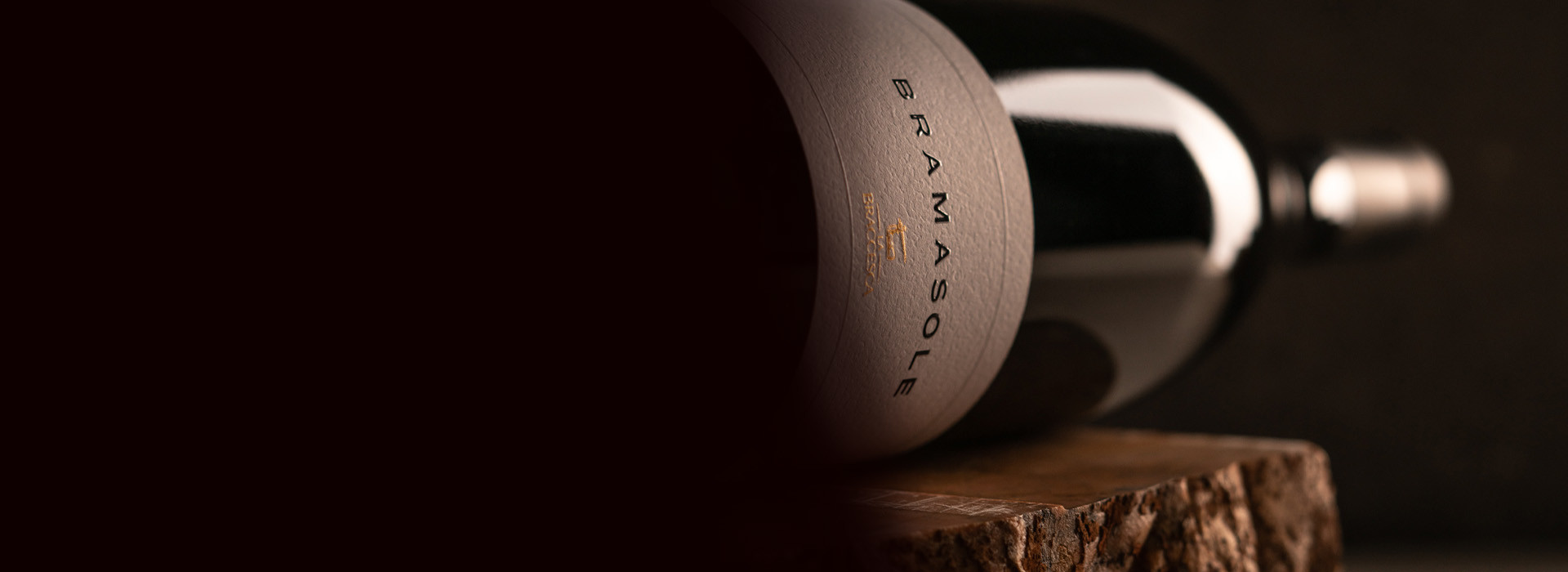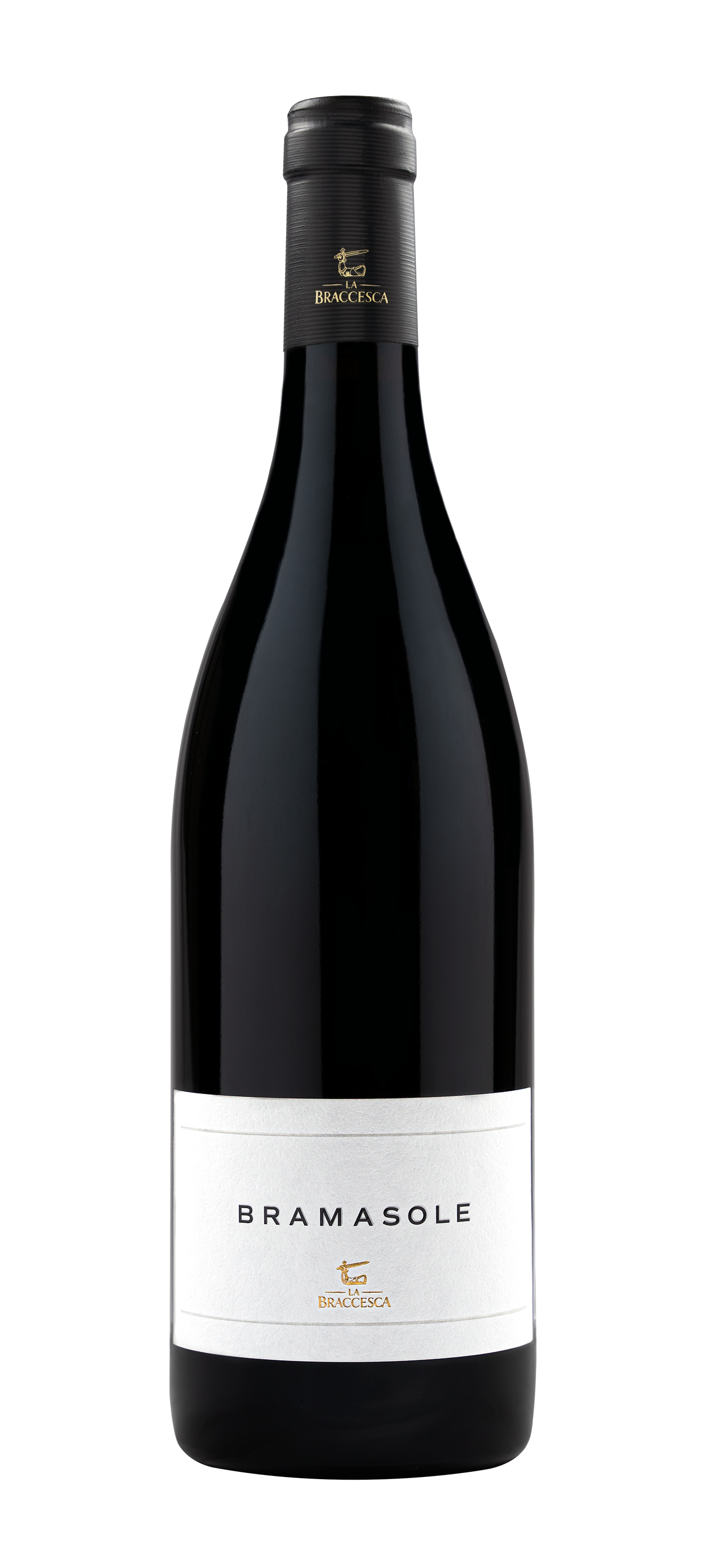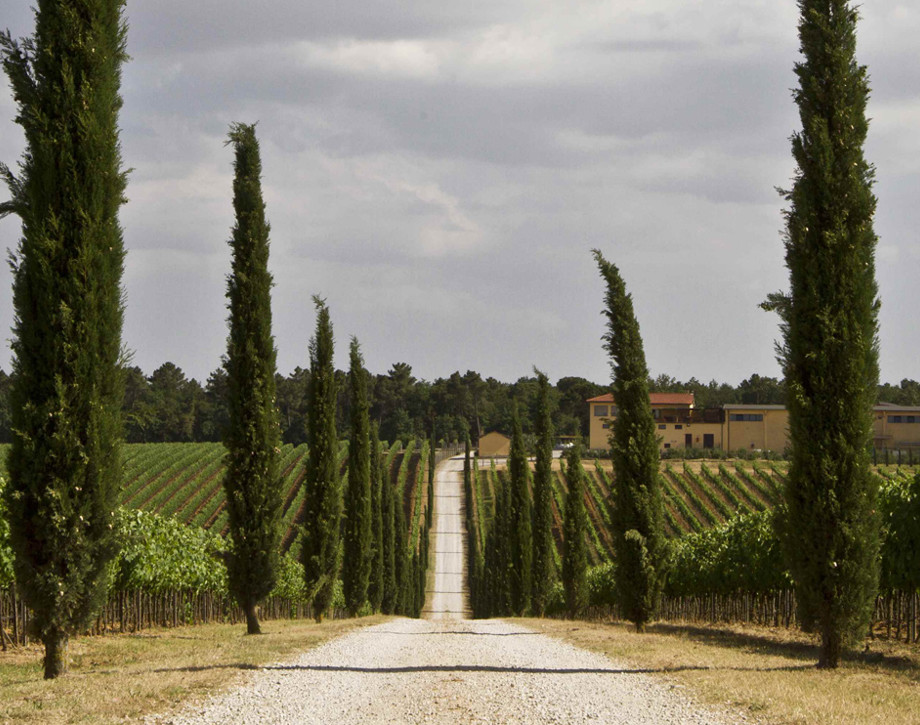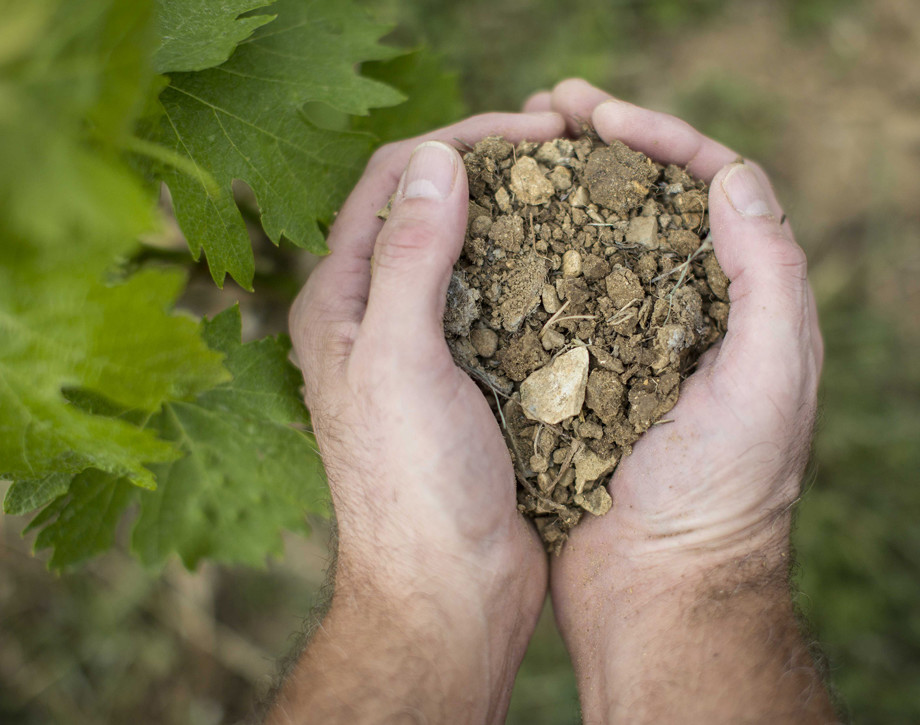Bramasole

Climate
The 2012 vintage was characterized by a dry, cold Winter. The rains of the Spring season assisted in a regular growth and development of the vine before the arrival of a hot Summer. End of August rains were useful in aiding the plant to complete the ripening of its grapes in a regular fashion, and the crop, in fact, showed a good quality level and balance in the grapes which were produced. The picking of the Syrah intended for use in Bramasole were picked at the end of the month of September.
Vinification
After destemming and a soft pressing, the must went into stainless steel tanks where it fermented and macerated on its skins, first at lower temperatures to extract the aromatic components and then with higher temperatures, around 82° Fahrenheit (28° centigrade) to assist the extraction of color and tannins. The overall period of skin contact lasted approximately 20 days. The wine then went into French oak barrels, both new and used once previously, where it was put through a complete malolactic fermentation. The period of oak aging , which lasted some 18 months, terminated with the bottling during the spring of the year 2014. The wine was then given a further period of bottle aging of approximately fourteen months before commercial release.
Historical Data
The estate’s name comes from the historical farm that once stood there, owned by the Count of Bracci, whose coat of arms appears on the estate’s logo; an arm covered with armor brandishing a sword. The property extends over an area of 508 hectares (1255 acres) and the vineyards cover an area of 340 hectares (840 acres) divided into two blocks: the first is 366 hectares (904 acres) of which 237 (585 acres) are planted with vineyards and is located on the border between the cities of Montepulciano and Cortona. The other block is 142 hectares (350 acres) of which 103 (254 acres) are planted with vineyards, it extends all the way to Montepulciano encompassing three of the most famous parcels of land known for the production of great red wines: Cervognano, Santa Pia and Gracciano. Bramasole is made from the sunniest part of the vineyard in one of Cortona’s best areas for the production of premium quality Syrah. Bramasole is a wine able to evolve over time and reflect this territory and its long-standing winemaking traditions using a new untraditional variety. Bramasole’s first vintage was 2000.
Tasting Notes
The 2012 Bramasole shows an intense ruby red color. The nose is struck by the notes of ripe red fruit in excellent balance with the aromas of tobacco and spice. The palate is powerful and supple and with well balanced notes of liquorices and ripe fruit. The finish and aftertaste are soft, long, and persistent.
Awards
James Suckling 94/100 USA Wine Spectator 92/100 USA

The Wine
Bramasole is made from the sunniest part of the vineyard, from the Antinori family’s innovative spirit and from one of Cortona’s best areas for producing premium quality Syrah. Bramasole is a wine able to evolve over time and reflect this territory and its long-standing winemaking traditions using a new untraditional variety. The first vintage to be produced was the 2000 vintage.

Climate
The 2012 vintage was characterized by a dry, cold Winter. The rains of the Spring season assisted in a regular growth and development of the vine before the arrival of a hot Summer. End of August rains were useful in aiding the plant to complete the ripening of its grapes in a regular fashion, and the crop, in fact, showed a good quality level and balance in the grapes which were produced. The picking of the Syrah intended for use in Bramasole were picked at the end of the month of September.
Vinification
After destemming and a soft pressing, the must went into stainless steel tanks where it fermented and macerated on its skins, first at lower temperatures to extract the aromatic components and then with higher temperatures, around 82° Fahrenheit (28° centigrade) to assist the extraction of color and tannins. The overall period of skin contact lasted approximately 20 days. The wine then went into French oak barrels, both new and used once previously, where it was put through a complete malolactic fermentation. The period of oak aging , which lasted some 18 months, terminated with the bottling during the spring of the year 2014. The wine was then given a further period of bottle aging of approximately fourteen months before commercial release.
Historical Data
The estate’s name comes from the historical farm that once stood there, owned by the Count of Bracci, whose coat of arms appears on the estate’s logo; an arm covered with armor brandishing a sword. The property extends over an area of 508 hectares (1255 acres) and the vineyards cover an area of 340 hectares (840 acres) divided into two blocks: the first is 366 hectares (904 acres) of which 237 (585 acres) are planted with vineyards and is located on the border between the cities of Montepulciano and Cortona. The other block is 142 hectares (350 acres) of which 103 (254 acres) are planted with vineyards, it extends all the way to Montepulciano encompassing three of the most famous parcels of land known for the production of great red wines: Cervognano, Santa Pia and Gracciano. Bramasole is made from the sunniest part of the vineyard in one of Cortona’s best areas for the production of premium quality Syrah. Bramasole is a wine able to evolve over time and reflect this territory and its long-standing winemaking traditions using a new untraditional variety. Bramasole’s first vintage was 2000.
Tasting Notes
The 2012 Bramasole shows an intense ruby red color. The nose is struck by the notes of ripe red fruit in excellent balance with the aromas of tobacco and spice. The palate is powerful and supple and with well balanced notes of liquorices and ripe fruit. The finish and aftertaste are soft, long, and persistent.
Awards
James Suckling 94/100 USA Wine Spectator 92/100 USA

Tenuta La Braccesca
La Braccesca spreads over 508 hectares where the ancient farm of the Bracci counts once stood, hence the name of the estate and its coat of arms: an arm covered in armour holding a sword. Since 1990 the Marchesi Antinori have owned the estate. The total surface area of the vineyards is 334 hectares divided into two parts: the first, of 232 hectares is located on the border between the municipalities of Montepulciano and Cortona. The other body, 102 hectares of which are planted with vines, extends as far as Montepulciano between three of the most renowned sub-zones for the production of great red wines: Cervognano, Santa Pia and Gracciano.

Soil
Clay loam


















